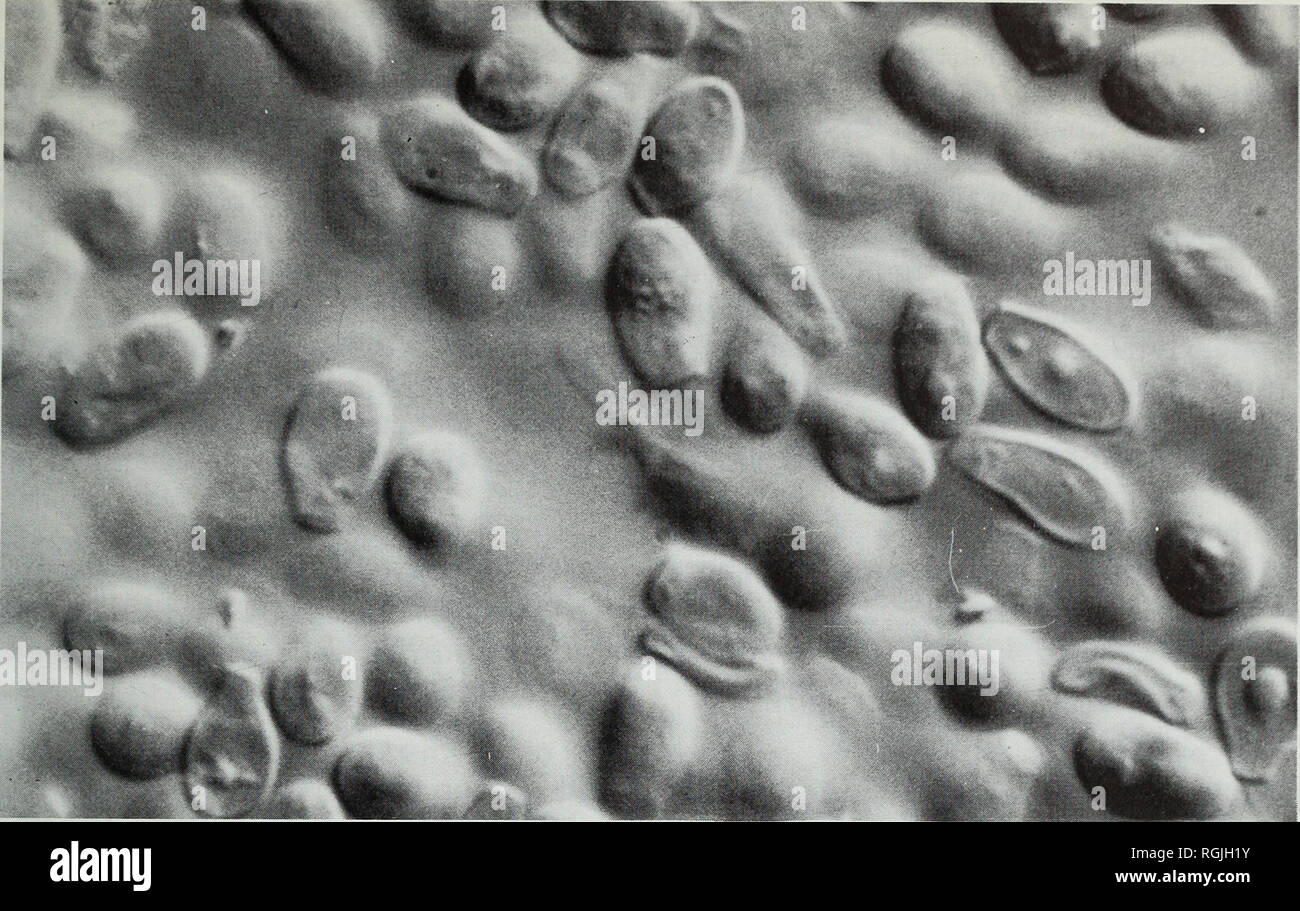. Bulletin of the British Museum (Natural History). Botany; Botany. LICHENICOLOUS COELOMYCETES 71. Fig. 34 Vouauxiomyces truncatus (Savoie, Santesson, UPS), conidia (x 2500). 471, 1857; K!) later distributed and illustrated material of both states. Pycnidia commonly occur without the teleomorph but are regularly encountered mixed amongst the ascomata. Abrothallus microspermus differs from A. parmeliarum, with which it has often been confused, in the consistently epruinose ascomata which only reach 300 jum diam; according to Keissler (1930) the ascospores are also paler brown and the epithecium

Image details
Contributor:
Book Worm / Alamy Stock PhotoImage ID:
RGJH1YFile size:
7.2 MB (638 KB Compressed download)Releases:
Model - no | Property - noDo I need a release?Dimensions:
1989 x 1257 px | 33.7 x 21.3 cm | 13.3 x 8.4 inches | 150dpiMore information:
This image is a public domain image, which means either that copyright has expired in the image or the copyright holder has waived their copyright. Alamy charges you a fee for access to the high resolution copy of the image.
This image could have imperfections as it’s either historical or reportage.
. Bulletin of the British Museum (Natural History). Botany; Botany. LICHENICOLOUS COELOMYCETES 71. Fig. 34 Vouauxiomyces truncatus (Savoie, Santesson, UPS), conidia (x 2500). 471, 1857; K!) later distributed and illustrated material of both states. Pycnidia commonly occur without the teleomorph but are regularly encountered mixed amongst the ascomata. Abrothallus microspermus differs from A. parmeliarum, with which it has often been confused, in the consistently epruinose ascomata which only reach 300 jum diam; according to Keissler (1930) the ascospores are also paler brown and the epithecium K- Hosts: Parmelia caperata (L.) Ach., and more rarely P. perlata (Huds.) Ach., thalli. Little damage is usually encountered and the fungus is probably parasymbiotic. Distribution: Austria, the British Isles (England, Ireland, Scotland, Wales), France, Germany and Switzerland. The report of the occurrence of this species in Sweden (Santesson, 1949 : 142) is based on material now referred to Vouauxiomyces santessonii. Specimens (additional to those listed by Hawksworth & Dyko, 1979): British Isles: England, S. Devon, Slapton Ley Nature Reserve, The Causeway, on Parmelia perlata on Salix, 30 March 1972, D. L. Hawksworth 2696 p.p. (IMI 164972 p.p.l, UPS!); he. cit, Peasdish, on P. caperata on Ulmus, 23 August 1980, D. L. Hawksworth 5043 (IMI 251260!); Dorset, Wareham, on P. caperata, 1978, V. Giavarini (E!). Scotland, Dunbarton, Loch Lomond, Aber Island, on P. perlata, 10 October 1979, B. J. Coppins 4482 (E, IMI 243340!). Wales, Merioneth, Barmouth, nr Arthog, Fegla Fawr, on P. caperata, 12 December 1972, B. J. Coppins (E!).—France: Savoie, Dept. Haute-Savoie, N of Sciez, Chateau Coudree, on P. caperata on Tilia, 9 June 1946, R. Santesson (UPS!).—Switzerland: sine loc, P. Hepp [Flecht. Eur. no. 471] (K!). Additional reports of anamorphs In addition to the anamorphs of Abrothallus and Microcalicium species treated in the preceding section, which can occur without their tel